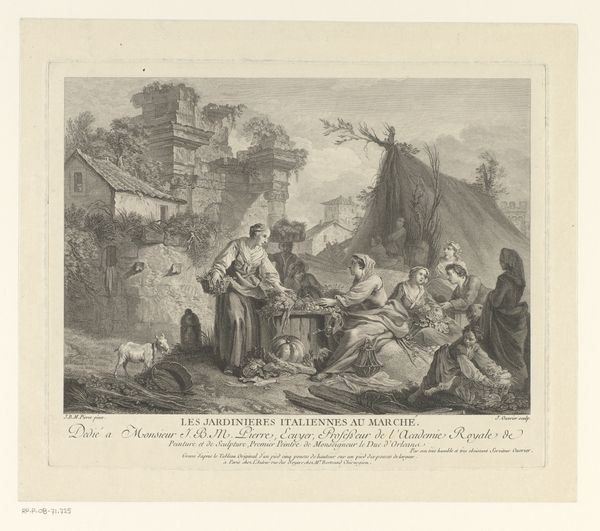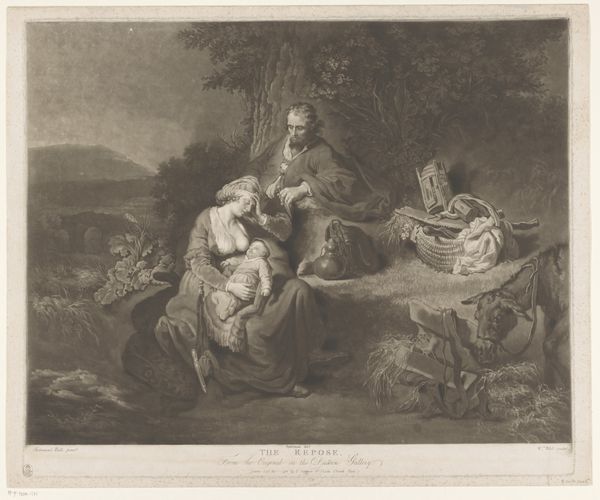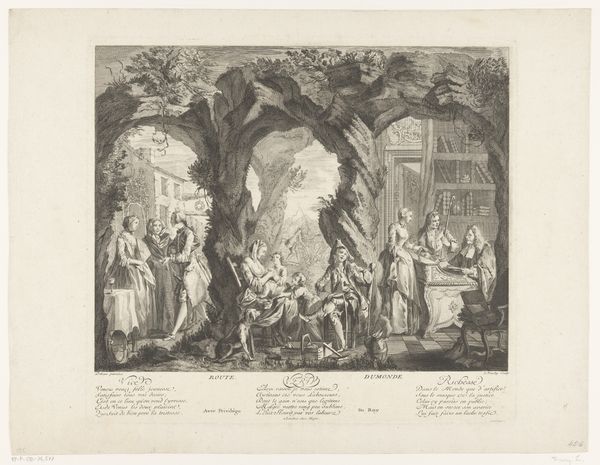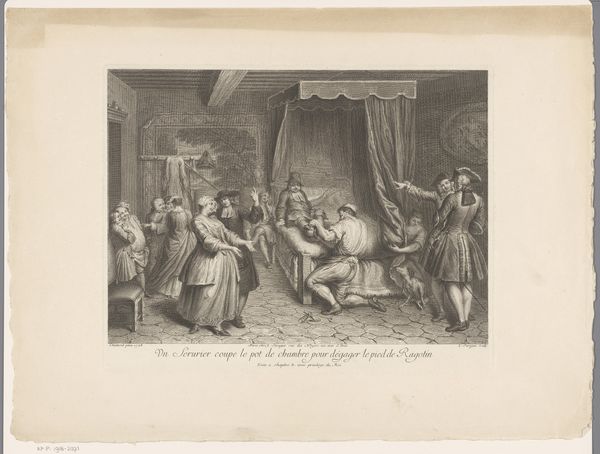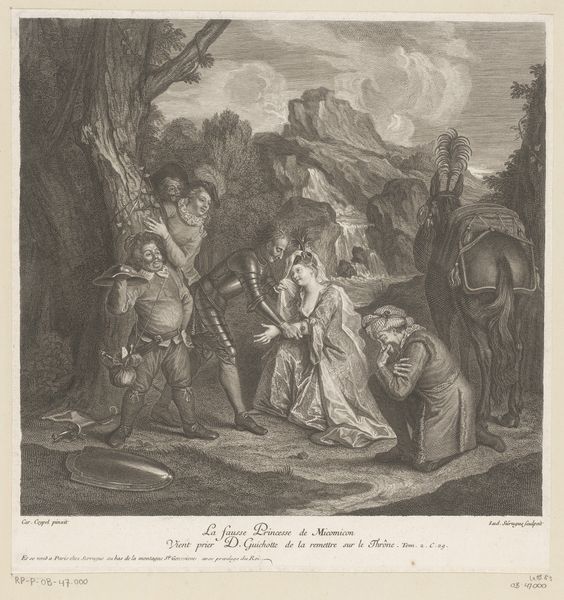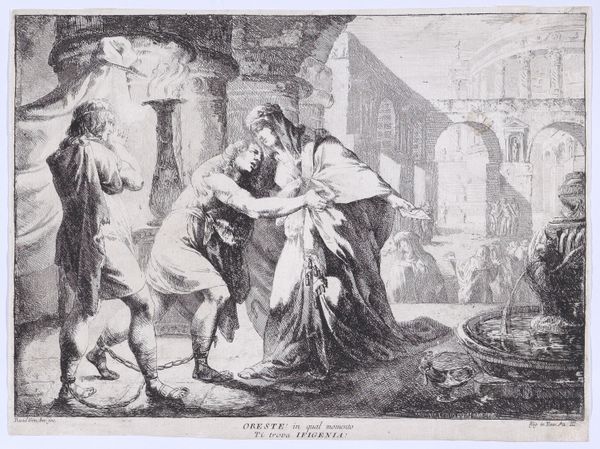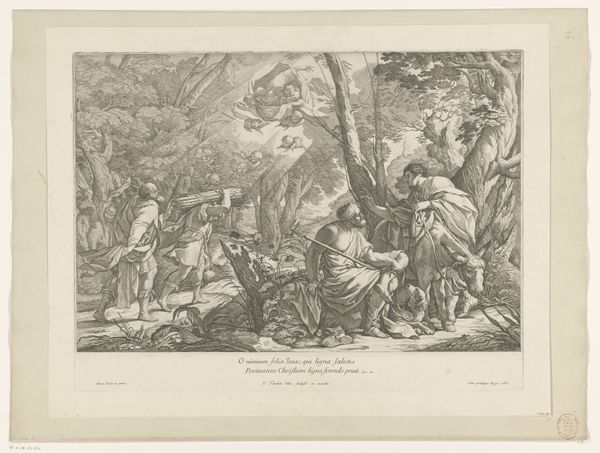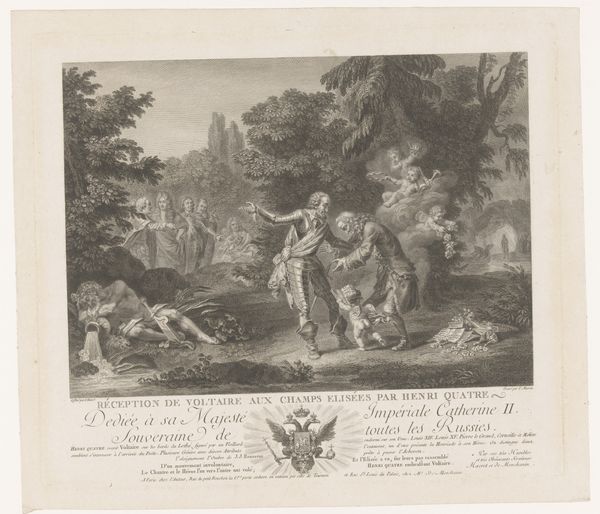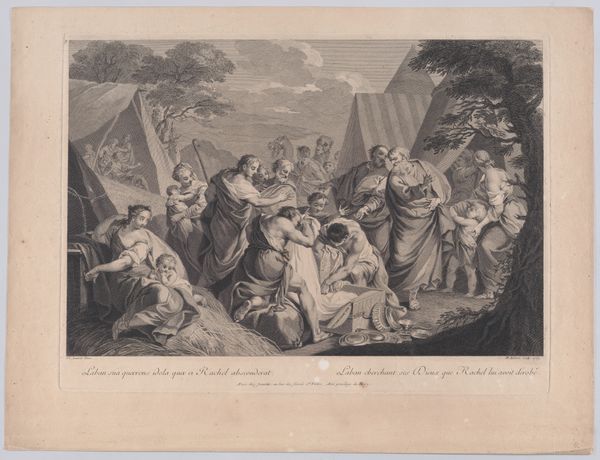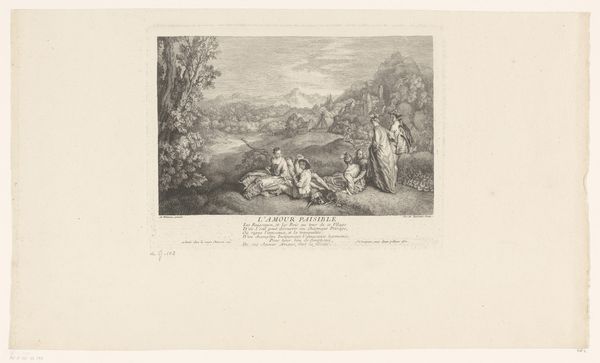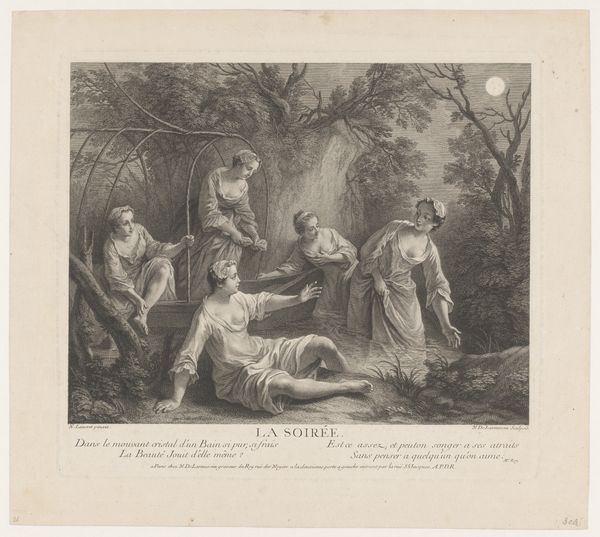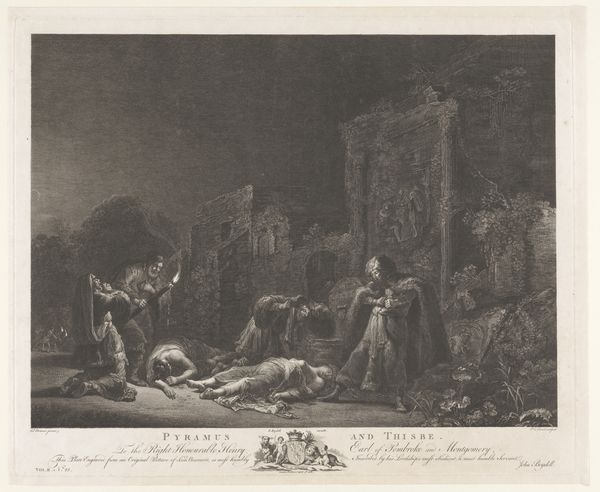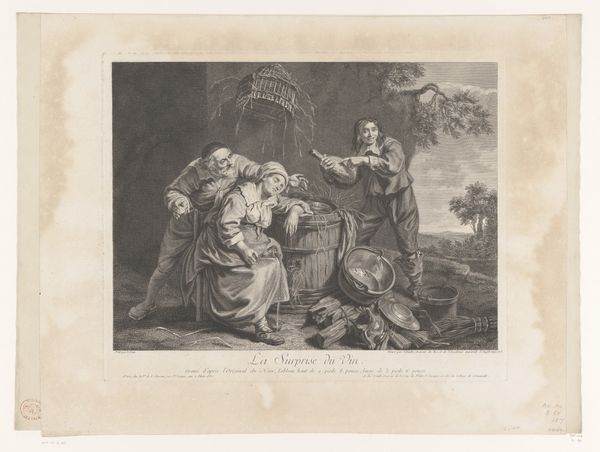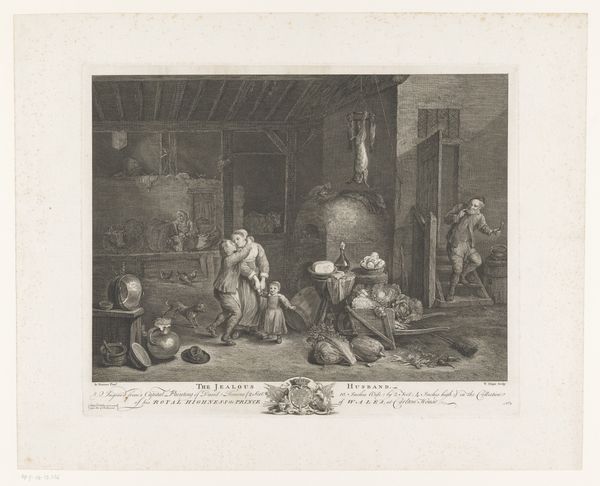
Dimensions: 211 × 297 mm (image); 265 × 332 mm (plate); 328 × 395 mm (sheet)
Copyright: Public Domain
Curator: Before us we have "Evocation of the Dead," an etching and engraving from around 1770, attributed to Joseph Francoise Foulquier, after a design by de Loutherbourg. What’s your immediate take on this rather theatrical scene? Editor: Well, immediately, the chiaroscuro grabs you. The intense contrast emphasizes the figures – both living and, presumably, undead – against this gloomy backdrop. The composition feels deliberately staged, doesn't it? Like a moment plucked from an opera. Curator: Indeed. De Loutherbourg was known for his theatrical set designs. So this print functions, in a way, as a reproducible commodity reflecting that aesthetic for broader consumption, correct? Think about the role of printmaking in disseminating these kinds of visually stunning spectacles during this period. Editor: I see what you mean; but looking at the image's structure it's difficult to know exactly where the vanishing point should be given its flat execution in monotone etching; maybe we could infer that there's an equal distribution of significance being given to the figures on the left with those on the right. How does the social history impact the reading? Curator: Precisely. Consider the materiality of printmaking itself, its affordability made imagery like this more widely available, changing access to art across class boundaries. Also, look at how Foulquier replicated Loutherbourg's style. The engraving becomes not just an artwork, but a record of artisanal collaboration and its influence during this time. Editor: Fair point. If we look at the figures conjuring or observing these ghosts though, notice how they recoil in fright yet also demonstrate composure and balance with how they support each other. The robes and fabric are beautifully rendered despite the small scale of the print. Curator: It makes one reflect on the power dynamics embedded within the artistic process and wider cultural trends, really. How consumer tastes shaped artistic labor and creative decisions, and how prints acted as currency, driving those relationships, as a historical artifact in its own right! Editor: A final thought—I like how the artist managed to communicate so much mood and dramatic effect by paying great attention to contrasting values using a minimum of gray and preferring harsh tonal extremes in the midground, which effectively captures the image of some necromantic rite! Curator: Very insightful. I find this kind of historical insight offers some intriguing details about the art's significance when understanding social consumption in eighteenth-century art practice.
Comments
No comments
Be the first to comment and join the conversation on the ultimate creative platform.
